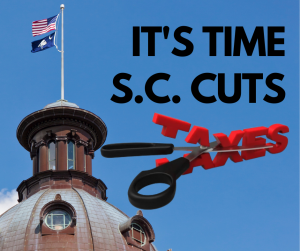Though each of us uses American dollars to pay for products and services each and every day, we rarely take the time to think of the value of money. No, this isn’t going to be some heavy-handed metaphor wherein I try and teach a deeper life lesson using money as an example. Instead, I truly wonder what would happen if Americans, on a large scale, took a look at how devalued and debased our currency truly is and what that means for our financial future. I have taken a look, and what I have found is truly frightening.
American money, like most national currencies in the twentieth and twenty-first centuries, is what we call “fiat currency.” Fiat is a Latin word meaning “to make it so,” which, when applied to money, means its value is made up by the government that issues it. Nothing really backs the money and, if it weren’t for laws that protect it, it wouldn’t be worth the paper it’s printed on. In America, this hasn’t always been the case. From the founding of the Republic to 1873, U.S. currency was backed by both silver and gold. This meant that the holder of a U.S. dollar could convert that cash into a certain amount of silver or gold upon demand. This gave the currency a relatively consistent value, and prevented prices from fluctuating wildly in our country.
Stable currency values and, in turn, stable prices are necessary for a sound economy. When the monetary value is manipulated, however, economic growth is imperiled and the property rights of all Americans are undermined. Think of it this way, if currency is devalued by 1.5% in one year (common under our current system of fiat currency) and you have $1,000 in a non-interest bearing savings account, the value of your funds at the end of the year is worth only $985 in the previous years’ dollars. This means that the amount of goods and services you can buy after one year of inflation is less than what you could’ve bought the previous year, since the dollar doesn’t go as far.
On the other hand, if you have a loan for $1,000, then you’re going to be a little happier, since you will be repaying the debt with dollars that are worth less. What a deal! Except the little problem that banks are smart enough to figure this out, and they simply raise their interest rates to make up for inflation on top of the interest they were already going to charge. This is how loan rates go through the roof. This mathematical principal, that inflation can theoretically make debt “cheaper, is why the Federal government is so interested in printing money. In theory, such a tactic devalues the currency, making it easier to repay the national debt. Unfortunately, as in the case of the bank loan, it also leads to higher interest rates on Treasury notes (which take up more of the Federal budget) as investors want to get paid to compensate for inflation while still earning interest.
This is how a debt tsunami comes crashing down on a once-prosperous nation: a spendthrift government tries to print money to pay its bills, which sends inflation and interest rates into orbit. Mathematics is based on absolute principles, which cannot be manipulated by mere human will. Efforts to undermine mathematical realities, notably with regard to money, lead to economic disaster. That’s why, as was the case for most of American history, our nation needs to put money on a set standard. In order for currency to carry a stable value, it must be pegged against precious metals or a fixed value based on another metric. Otherwise, we’ll continue to see the value of our money dwindle away due to the devastating effects of debt-driven inflation; this is a clear and present threat to the property rights of private Americans across the country.
Since President Nixon removed the dollar from the gold standard in 1971, its value has decreased by more than 85%. This has seriously undermined our nation’s financial health and the financial strength of American families, financial institutions and businesses. We must have a money supply that keeps up with economic growth, where Americans have the access to dollars needed to facilitate economic activity; however, we must not have growth in the money supply that sends inflation soaring. The two extremes of deflation (where there aren’t enough dollars in circulation to keep the economy cooking) and inflation (where too many dollars are in circulation undermining the currency value) are represented best by two years: 1873 and 1971.
In 1873, the Federal government decided to shrink the money supply by taking silver out of circulation. Remember, above, where we discussed the U.S. dollar once being backed by silver and gold? Well, that combination allowed the money supply to slowly grow at the same pace as the economy. Silver is more plentiful than gold, and its availability allowed the money supply to expand at a rate necessary to keep up with growth in population and economic output. In 1873, however, the government decided to shrink the monetary supply, by taking silver out of the equation, which led to economic recession and near-depression. The reverse of inflation, which I described above, occurred under this scenario. The shrinking of the money supply sent prices down and the value of savings accounts up; however, it also sent up the expensiveness of debt. So, instead of having a debt balance that decreases 1.5% (based on the value of previous dollars) with inflation, it will increase relative to previous dollars with deflation. So, if you were a business owner that took out a loan for $1,000 in 1872 and the value of the dollar increased by 1.5% in 1873, it would take $1,015 dollars (based on the 1872 value) to pay it back! So, as prices are falling, payments are becoming harder to make. This put thousands of businesses out-of-business and many people in the unemployment lines.
So, as you can see, printing money faster than growth in the economy can keep up with it (which is what Washington is doing right now), or not putting enough dollars into circulation to keep up with growth in the economy, leads to economic stagnation and recession. Our nation must avoid continuing down the path we were put on in 1971, which undermines the value of our currency by inflation, while also avoiding the trap of 1873, which shrank the money supply and, along with it, the country’s economy.
As such, I believe it is important for America to adopt a fixed standard of money, like saying that one dollar is worth a certain weight in gold or silver, even if it cannot be immediately converted to gold or silver like in the olden days. Additionally, common sense laws ought to be adopted that restrain the Treasury and the Federal Reserve from growing the money supply faster or slower than the economy, as both will lead to economic disaster. Sound money is a must if America is to restore prosperity to our economy and the protection of property to our people.





I was more than happy to find this web-site.I wanted to thanks for your time for this wonderful read!! I definitely enjoying each little little bit of it and I have you bookmarked to take a look at new stuff you blog post.